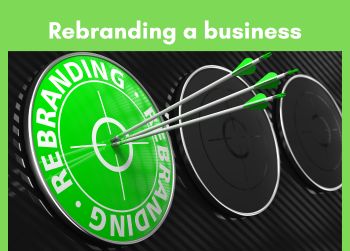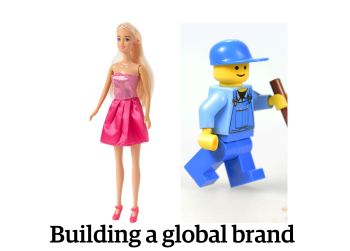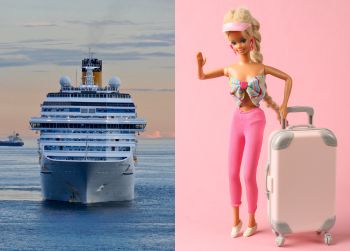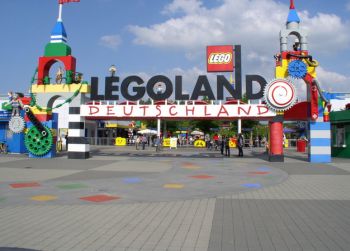If Twitter is your place in the world of social media, you will be aware that it has been rebranded as X. No doubt the owner of the social media platform has his reasons, but for most it is a confusing change. Amongst other things it alters how we use language relevant to that medium: do we still tweet or do we now ex? With time users will either adapt to the change or will move on to other platforms.
This Conversation article by an advertising and public relations academic considers successful and unsuccessful high profile rebrands including discussing the Twitter-to-X rebrand.
In Aotearoa New Zealand it was recently announced that close to 200 Countdown supermarkets throughout the motu (country) are to be rebranded as Woolworths supermarkets.
Woolworths as a brand has been in New Zealand since 1929 when the first “Woolies” department store opened on Wellington’s Cuba Street. In 1965 the first Woolworths supermarket opened in Hastings.

Woolworths supermarket, Johnsonville Mall, 1978.
Photographer: Charles J Fearnley
Republished courtesy of the WCL’s Recollect collection
Those of a certain age will remember when Woolworths supermarkets rebranded to Countdown some decades ago.
News reports have the new brand change, from Countdown back to Woolworths, and including store upgrades, as costing the Woolworths group an estimated NZ$400 million over the next three years.
Vodafone, however, on announcing its intention to rebrand to One New Zealand earlier this year, was understood to be saving tens of millions of dollars as a result of the name change. Even though the advertising campaigns, change of corporate logos and slogans and the embedding those into corporate culture and the minds of consumers, will surely come with a hefty cost.
This begs the questions Why does a company rebrand? Is it worth the cost? The confusion? What is a company brand anyway?
In answer to the first of those questions Jim Heininger of Everywhere You Look Companies Are Rebranding—But Why? :
“I’ve noticed that there are two buckets of reasons an organization rebrands: need or opportunity. Oftentimes, it is a combination of both.”
If you want to know more about branding or rebranding – either business or a personal brand – Wellington City Libraries makes a range of resources available that are designed to assist.
Linkedin Learning courses and short videos are available to anyone with a library membership.
Using your registration number and password, sign in and enter “Branding” or “Rebranding” into the search box to find a listing of resources that will be useful.
Some of the book resources we have available include :
The only book you will ever need on branding : to start, run and grow your business / Maandag, Michiel
“This no-nonsense book is for anyone who wants to create a winning brand without drowning in theory. A great product is not enough. You cannot sell or promote anything without an original and distinctive brand. But how do you create a good name, a memorable logo and a recognizable category so that everyone understands what you are selling? In The Only Book You Will Ever Need on Branding you’ll find out everything you need to know – fast. Using quirky illustrations to make its point you’ll discover how to fast forward the success of your brand in a couple of hours. You’ll grasp the key concepts of branding, learn how to improve your existing brand and find out what other start-up books don’t tell you”–Publisher’s website.” (Catalogue)
The fundamentals of branding / Davis, Melissa
“The Fundamentals of Branding offers an overview of the foundations for building, developing and maintaining brands. Branding is a discipline that has emerged over the last century to become a ubiquitous force in marketing. It is also a discipline that is rapidly evolving, affected by technological advancements and a constantly shifting social context. This title is designed to give readers a broad understanding of the stages and methodologies adopted in the brand development process.” (Catalogue)
Branding for the public sector : creating, building and managing brands people will value / Temporal, Paul
“From government programs to non-profit organisations to global NGOs, organisations in the public sector are increasingly turning to branding strategies employed by for-profit companies to develop their images. Image is everything, particularly in the developing world in which many public-sector groups operate. Consequently, the public sector is the next big growth area in branding, but few books address branding strategy specific for this sector. Branding for the Public Sector fills this gap with powerful and effective branding strategies backed by case studies and examples. Author Paul Temporal covers branding architecture, brand vision, market research, brand perception, brand engagement, brand communication, managing brand change, and much more. Additionally, he covers the future of public sector branding and how organisations in the public sector may be a key driver of economic growth and prosperity through the twenty-first century. Branding for the Public Sector offers expert guidance for managers and leaders who want to build powerful, influential brands in the public sector”– Provided by publisher.” (Catalogue)
Brand elevation : lessons in ueber-branding / Schaefer, Wolfgang
“How can a brand become one of those peerless ‘Ueber-Brands’ we all admire and are willing to pay a premium for? – Is there a proven process? – Where should we start? Brand Elevation explains the main drivers behind brands becoming peerless and priceless and how to harness these principles to develop a winning brand strategy. Written for marketers and brand managers of all levels of experience, and for both those working in start-ups and established players, it proposes a six-step, easy-to-follow program to elevate your brand. Brand Elevation explores challenges such as creating a distinct and brand-guiding mission, mediating between exclusivity and inclusion and mastering the art of seduction. Featuring case studies and expert accounts from organizations including Airbnb, Acqua di Parma, Burt’s Bees, Lakrids, Starbucks, TerraCycle, and YouTube, Wolfgang Schaefer and JP Kuehlwein skilfully explain how any brand – regardless of sector and industry – can become a modern prestige brand”– Provided by publisher.” (Catalogue)
Website branding for small businesses : secret strategies for building a brand, selling products online, and creating a lasting community / Nahai, Nathalie
“With so many customers taking to the web for information, every business needs to have an online presence, especially a small business. However, a simple website won’t suffice and each enterprise has to properly connect with customers to build and nurture a relationship that will ensure their devotion to the brand. This is where Nathalie Nahai, The Web Psychologist, steps in. Nahai expertly draws from the fields of psychology, neuroscience, and behavioral economics to share the latest developments, innovative techniques, and original insights that will lead any small business to online success, with information on: * Targeting the emotional versus the rational brain * The psychology of decision-making * How to pinpoint your target market * Communicate persuasively * Utilizing images, video, and colors to grab attention * Making a website easy to use * Using social media to connect * Increase sales through e-commerce What makes consumers click on a link? In what ways can you target different demographics? How do you make the web work for you? The tools in this book will give you answers to help develop a compelling, influential, and profitable online strategy to catapult your brand to the next level. ” (Adapted from Catalogue)
Magnetic stories : connect with customers and engage employees with brand storytelling / Dolan, Gabrielle
“Your brand is the stories people share about you when you’re not in the room. Whether a small, one or two-person company or a large multinational; a not for profit or a Government organization; a start-up entrepreneur or a corporate institution; a school or a sporting team; a religious institution or a political party; a local café or a global franchise — everyone has a brand and everyone has a story. The reality is people are already sharing stories, both the good and the bad.” (Catalogue)
Marketing mess to brand success : 30 challenges to transform your organization’s brand (and your own) / Miller, Scott Jeffrey
“In Scott Miller’s newest Mess to Success guide, the FranklinCovey senior advisor and Wall Street Journal bestselling author reveals 30 career obstacles that you may encounter in your brand marketing, and how to transform them into company wide gains.” (Catalogue)
If you need more information please contact the Prosearch team at the library. We can help you find information across a range of perspectives and resources. All enquiries are treated in confidence.









